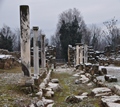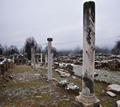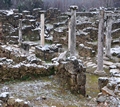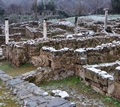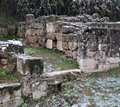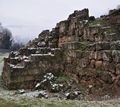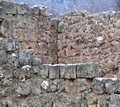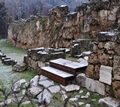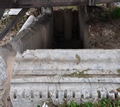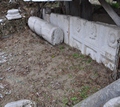
The first inhabitants of the city were the Phrygians who were later expelled by the Macedonians. In the years of Philip II (356 - 336 BC) it was fortified and developed into an important urban center of ancient Vottiaia. In Roman times it was a station on the Egnatia Odos.
The "upper city" (citadel) was located on the edge of the rock of today's Edessa and was enclosed between the rushing waters of the waterfalls with a triangular enclosure. The "lower city" stretches at the foot of the rock, in the fertile area of Logos, and is surrounded by a strong wall (from the end of the 4th century BC onwards). Inside the city, the main roads leading to the gates of the wall and various buildings, mainly from late Roman and early Byzantine times (houses, workshops, warehouses) have been uncovered. The columns with slave liberating inscriptions carved on them, which rise along the main road (via colonnata, about 100 m long), and other scattered architectural members come from the Roman temple of the goddess Ma, i.e. the Great Mother. In Logos, near the waterfalls, a three-aisled Early Christian basilica (6th century) has been excavated. A significant part of the decorative sculpture and floors with marble inlays (in the initial phase they were covered with mosaics) have been preserved. In the neighboring monastery of Agia Triada there are early Christian sculptures and inscriptions.
Editor: Fotini Anastasopoulou











